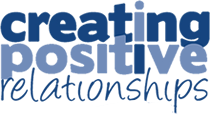Creating Positive Relationships (CPR) educates students and their parents about relationships and sexual behavior from a whole person standpoint. CPR provides the information necessary for young people to consider the emotional, physical, social and mental aspects of relationships and the significant freedoms and benefits associated with delaying sexual activity. Delaying sexual activity until marriage is the healthiest choice. During the 2013-2014 school year, CPR served 28,640 students in Central Indiana and touched the lives of more than 10,000 other students in the US and abroad in 2014.
Grade-level Programs. CPR serves students in grades 6th, 7th, 8th, and high school. The high school curriculum is not geared toward a specific grade level. Each high school typically offers the program in their Health class.
CPR’s programs are used by public schools, private schools, Christian schools, home-schools, shelters for homeless mothers, young adults, missionaries, and churches, and has been adapted for young people with special needs.
CPR revises the curriculum every year to reflect the most up-to-date research and current trends impacting young people, such as social networking, ‘sextortion’ and bullying. CPR’s curriculum is interactive and engages the students with information in an interesting and entertaining way, allowing participants to make connections between decisions and consequences themselves.
The curriculum used in the middle school or high school programs are not redundant. School districts can choose to offer CPR’s programs from 6th grade through high school, allowing students to engage in the entire curriculum range, or select specific years.
Building Healthy Futures, the middle school program, consists of five forty-five minute sessions for each of the grade (6th, 7th, and 8th) levels. Most schools complete a grade level in one week.
The 6th grade curriculum addresses: anatomy and development of the reproductive system; maturity, immediate gratification, decision-making, goal setting; love and crushes, setting boundaries, sexual abuse; physical, emotional, mental and social consequences of sexual involvement, including HIV information; peer influence, and non-verbal communication.
The 7th grade curriculum covers: developing an abstinent plan; respect for self and others, and decision-making; possible consequences of sexual activity, STI information and setting limits; and sexting, sextortion and pornography, and the importance of a healthy body image.
The 8th grade curriculum addresses: qualities of a good relationship; relationship abuse, teen pregnancy, parenting and secondary abstinence; types and symptoms of STIs, how condoms work to reduce the spread of infections and whole-person consequences of sexual behavior; setting boundaries, knowing oneself, benefits of parent relationship and adult mentors, decision making/problem solving model, determining talents and passions, resisting peer pressure.
Choosing Healthy Lives, the high school program consists of five fifty-minute sessions covered in five days, or shorter for block schedules.
Topics covered in the High School program include: 5 components of a healthy relationship, definition of sexual activity; compatibility and relationship chemistry; qualities of a positive relationship, potential effects of sexual involvement and STI information, including pictures of infections; healthy vs. unhealthy relationships, date rape, character development and creative dating ideas; and healthy communication in relationships and characteristics of a committed relationship.
CPR also offers an adapted program for high school students with special needs in a self-contained classroom setting.
Parent webinars are available to inform parents of the content and nature of each lesson. Students in the classroom are encouraged to bring their student booklets home and continue the conversation with the adults in their home.
Community Partners. CPR licenses international and domestic organizations and parents to use the CPR program and trains Instructors who will present the curriculum. In the 2013 fiscal year, CPR worked with 23 Associate organizations and numerous schools throughout Indiana, Kentucky, New Mexico, Ohio and Rhode Island. CPR also worked with 10 Associate organizations and schools in Burundi, Cambodia, Honduras, Mauritius, Nicaragua, Kenya, Uganda, Ukraine and Costa Rica. Through these Associate programs, CPR’s curriculum touched the lives of more than 35,000 students in the US and abroad in 2014.
